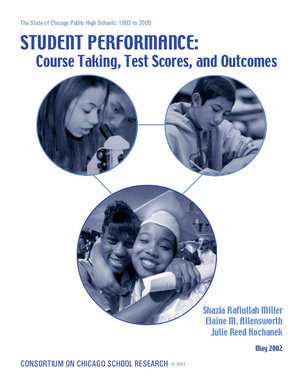1. What improvement, if any, has there been in student performance?
2. What is the absolute level of performance?
3. Is improvement the result of real changes in the high schools, or only a consequence of having better-prepared students?
Between 1993 and 2000, high school eligible students in Chicago Public Schools improved on a number of measures.
These trends exist even though we include in our analyses the students who dropped out of school between eighth and ninth grade, or were sent to Academic Preparatory Centers (APCs). More students were on track their first year after elementary school (received no more than one failing grade in a core course and had enough credits to assume sophomore status on time), passed the algebra/geometry sequence by the end of their second year, and passed an honors class sometime in their first year. Somewhat more students also completed a college preparatory program and passed an honors or advanced placement course over four years. The percent of students graduating by age 18 rose slightly, and the percent of students dropping out by age 18 fell slightly. Finally, the average score on the Tests of Achievement and Proficiency (TAP) rose substantially for the subset of students who enrolled in ninth grade. Nonetheless, performance as a whole remained low.
When measuring the effects of high school reform policies, the news is mixed. Policies aimed at bringing in better prepared students appear to have worked well and account for much of the improvement in student performance. The system's redesign of high schools in 1997, however, appears to have had only a modest impact on increasing the rate of development of students' skills.
The report includes system trends, as well as school-by-school analyses of TAP scores and two-year dropout rates. It also includes information on how students progress through APCs.

